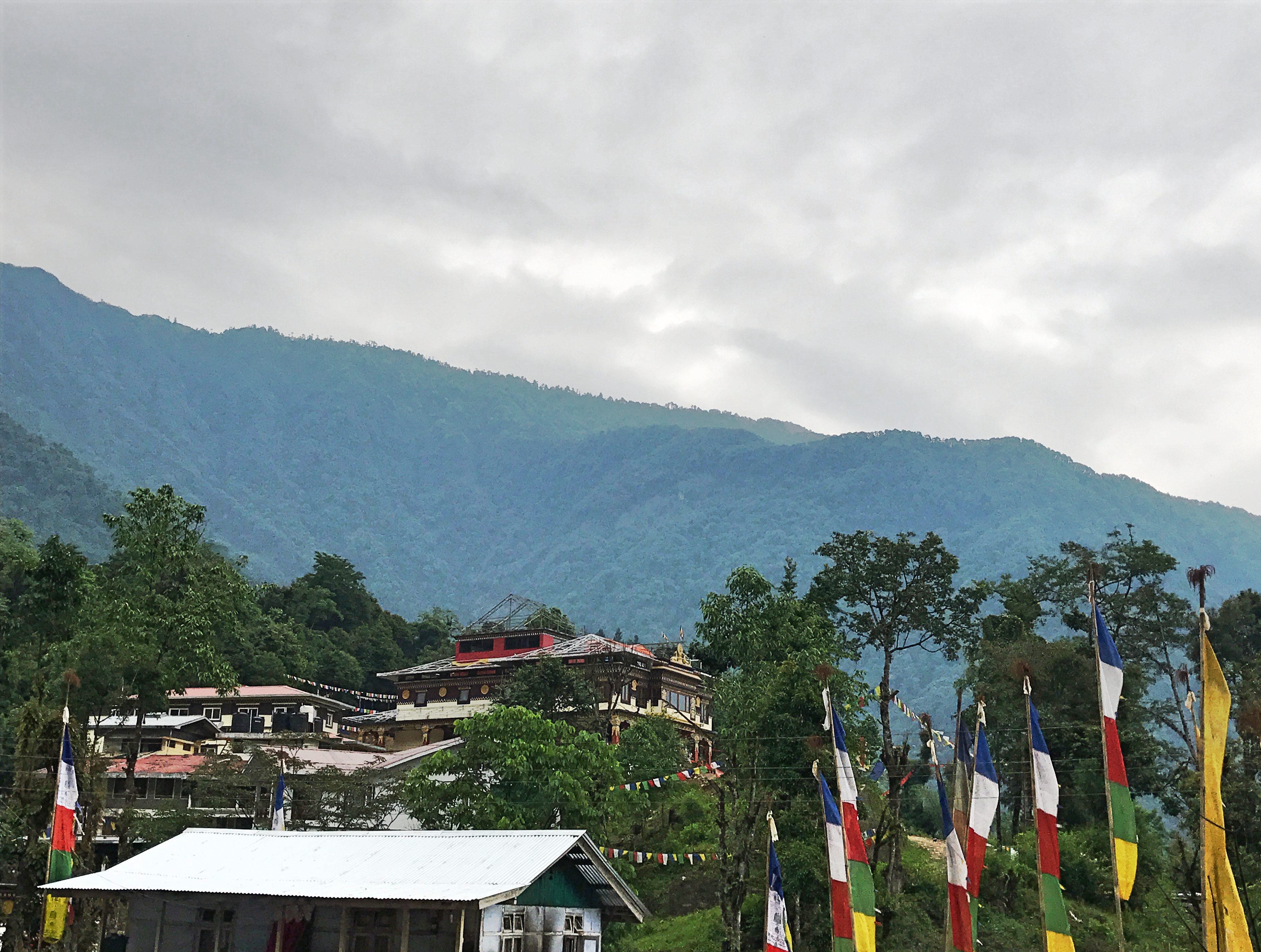
Exploring the Mountains of the North East- Part 2
Waking up a day before, in a fresh environment with mountains all around and birds chirping, we had gotten used to it. Our hotel at Gangtok was a posh 3 star hotel with extremely large rooms but no fans and no ac. Since it was summer, it got pretty stuffy out there. We were glad to be checking out that morning!
We were looking forward to visiting a few places in Gangtok before heading off to Pelling.
Jakhri Waterfalls- Waters tumbling down the hillside in a series of mini-waterfalls
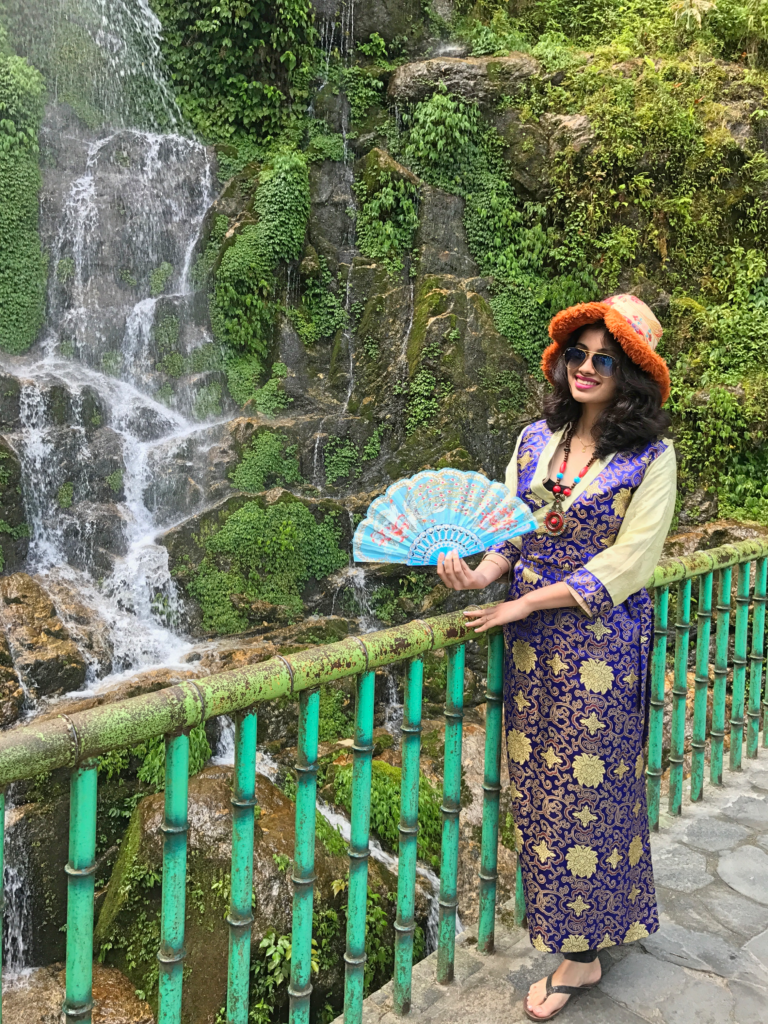
Our first stop was the Jakhri waterfalls which was about 4kms from the place that we were staying at. The waterfalls, amid the green of the forested hills looked like a reflective white strip and was an enchanting sight . Across the waterfalls, was a small decorated bridge and a few vendors providing the Tibetan traditional attire (Bhaku) on rent were stationed a few meters ahead from there.We took a few snaps wearing it before driving off to our next location.
Ranka Monastery – Where the tranquility floated around

As we walked into the Ranka Monastery, a long set of prayer wheels welcomed us. We made our way inside, spinning these prayer wheels as they are told to bring good luck . This was an extremely alluring monastery. Beautiful and Colorful gold outlined paintings decorated the walls and the ceilings, huge idols and many tinier ones were carved beside them. Shiny flags fluttered in the air. There was an air of peace and calm enveloping this place. The grounds of the Monastery, overlooked the whole city and the view was breathtaking. As we explored more, we discovered a beautiful and a well maintained nursery in the premises.
Do- Drul Chorten – The symbolism of the victory of good over evil

On asking, the locals narrated a very interesting story behind why this place was built. We were told that while building a monastery, each morning the workers would find all their previous day’s hard work destructed. They assumed that the place was being haunted by demonic spirits. Later a very respected Tibetan Monk stepped in and drove away the spirits. A stupa was later built by him as a symbolism of victory over evil. The stupa was surrounded by 108 prayer wheels all of which had mantras inscribed on them in Tibetan. We rotated the prayer wheels in a clockwise direction as we were told that they cleanse us, and wash away our sins by doing so.

One thing I found really fascinating out here were the sign boards, which kept us entertained all the way- quotes, hilarious sayings and important information stated in humorous ways.
The drive – Gangtok to Pelling
We continued driving through the rugged cliff curves and quaint little villages. On every alternate curve of the roads, we noticed small streams of flowing water, some of which even continued to flow over the roads carrying down little pebbles and stones along with them. Lined along the course, were pretty colorful houses that I was itching to go and have a look at. Heavy rains met us midway between our drive, at South Sikkim which made the drive all the more challenging and frightening owing to the narrow and dangerous routes.
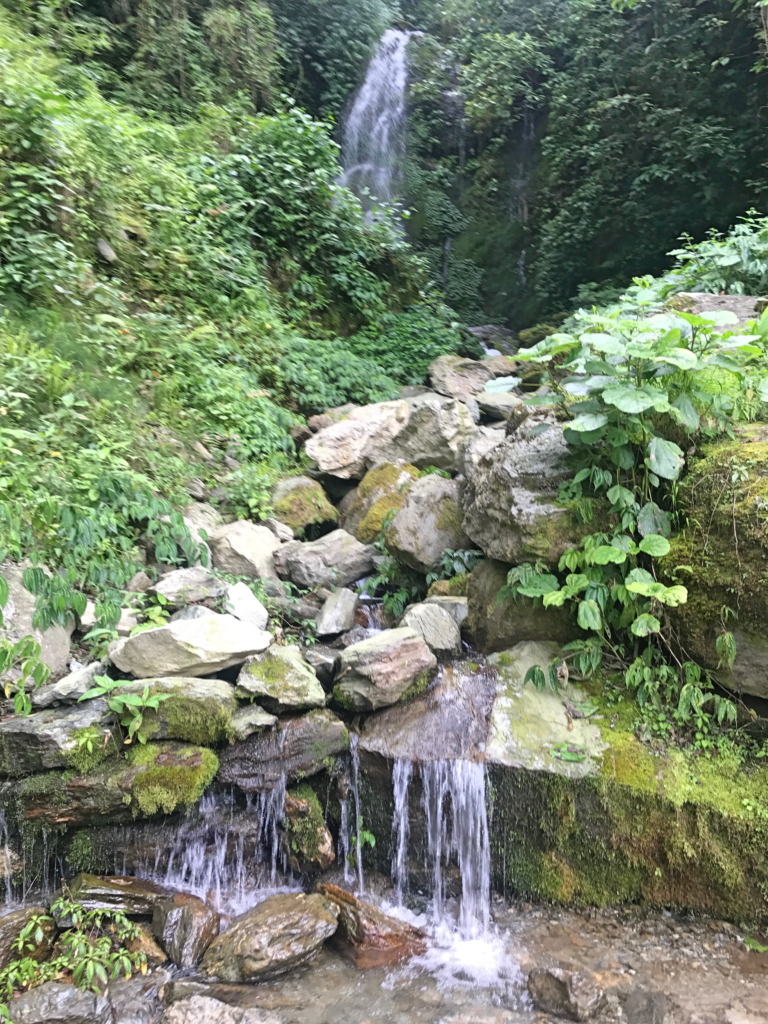
Each time we inquired with the driver, as to how far our destination was, instead of telling us the distance in kilometers (something that we are used to) he would point us to a distant spot on a mountain top and tell us that we’d have to drive over a few mountains to get there. We found this very amusing as the total distance would usually be around 30-40 km from one location to another, however it would be a drive through 3-4 mountains to get there. The hills were connected to one another by motor-able bridges.
As we drove on, we watched as the waters of the Rangit river gently flowed, over a shallow shelf of stones, seemingly endless, tireless, effortless with a fluid grace.
Pelling (West Sikkim)
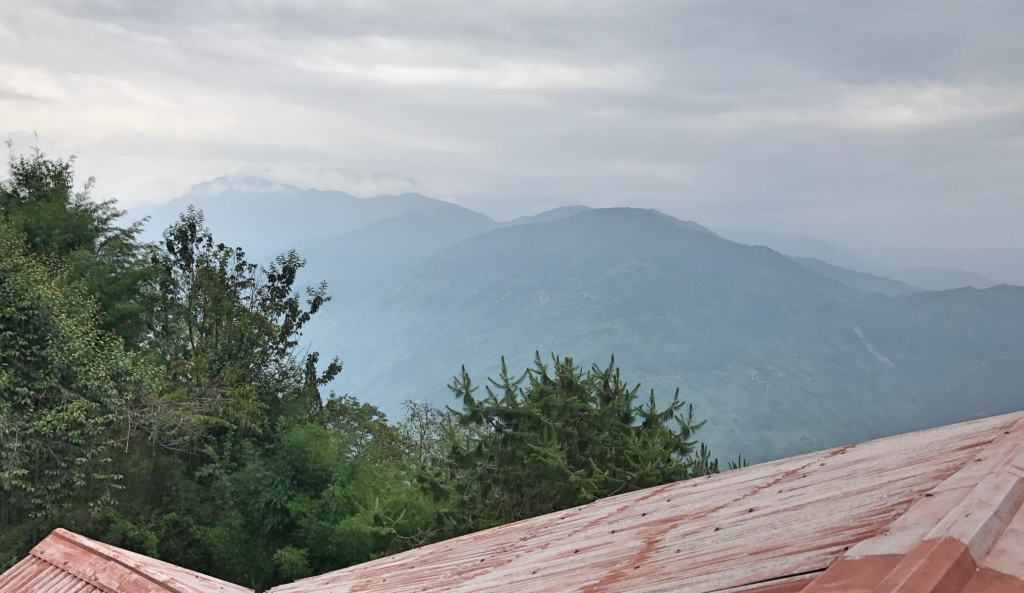
Our resort was situated on a mountain top with a mesmerizing view, below. The landscape glowed a shade of orange under the setting sun. We were allocated a tiny cottage in the extreme corner, it had a lovely sight of a series of hilly crowns with lush greenery all around. We promised ourselves to explore the resort the next morning as it seemed to be home to many flowering plants and the night lights that shone to show us the way, didn’t seem to do justice to their beauty. Pelling sightseeing was on our cards for the next day.
We woke up to the beautiful view of the Kanchenjunga mountain (third highest peak in the world). After having had our breakfasts we headed to our first destination of the day – khecheopalri lake.
Khecheopalri lake – The shimmering clear waters
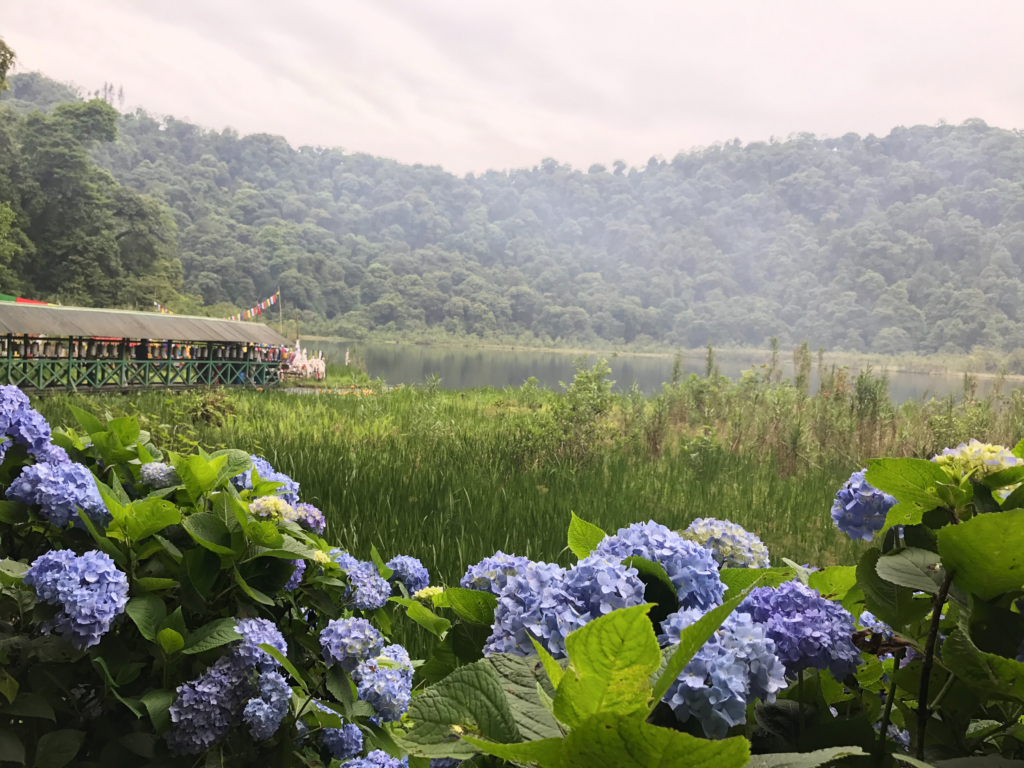
Located at a distance of 22 km from Pelling, we were told that this lake is known to be a wish fulfilling lake. The lake was at a distance of 10-15 minutes walk from the main parking area, the whole foot way was lined with their colorful flags. We bumped into a small monastery on the way, having a giant prayer wheel. It is said to bring good luck if rotated thrice, which we did. A hidden bell clang, each time the prayer wheel completed a round of rotation.
The view from the lake was absolutely remarkable, an expanse of crystal clear waters reflecting the wisps of clouds of the sky, blossoming flowers and the cheerful vibrant flags swaying in the air.
A deep sense of serenity overcame me as I stared in rapture at the expanse of blue that lay before me. Rays of the sunlight danced delicately across the water, that made the view all the more beautiful.
Close to the lake, was a small pond which was home to numerous fishes and they were being fed by the people, who were visiting the lake. The walk to the lake, and hence the tiny pond, was through a closed enclosure with prayer wheels lined along the way, which we spun on our way there. The ingress of this place, had a few souvenir shops and little shops selling crisps and tea.
Kanchenjunga falls- Thundering down into the pool like a gigantic water spout
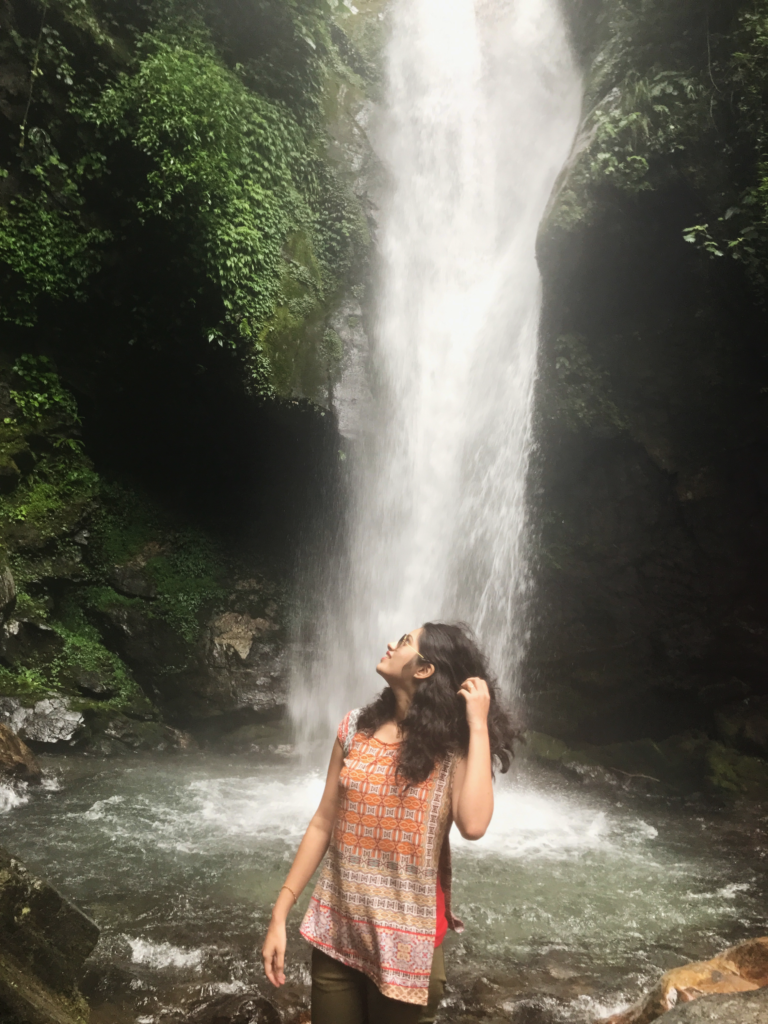
We took a series of rock cut steps to get to the foot of the main falls, bouncing over the rocks and dodging the sprinkling waters. People were stationed here, to help us get a grip and to guide us through. The rocks over which we were stepping, in order to get there, had turned slippery due to the moss having grown over them and the continuous flow of the water streams
From a distance, it looked like distinct threads of watery fabric. However as I got closer, it looked like a sleek robe of a water as its glassy brilliance plinked. Its edges were seamed in silver and glinted in the aureate light. The sun came out, just then. Its rays caught the watery slide, giving it a trance-like feel. It shone like glittering shreds of silver. The airy sparkling of its spray was magical.
We dabbled in the water, waded through and clicked a few shots before stepping away. The might of the water pouring down, was so high, that the camera lens were getting hazy, due to the droplets of water coating it up. Even keeping our eyes open was a herculean task, as the roaring waters made the gust of air that blew through, very strong. The stairs were lined with many small food stalls serving snacks and tea. Sipping on a hot cup of tea, admiring the beauty of the majestic waterfalls was an ecstatic feeling.
Pemayangtse monastery – The state of quietude prevailed here
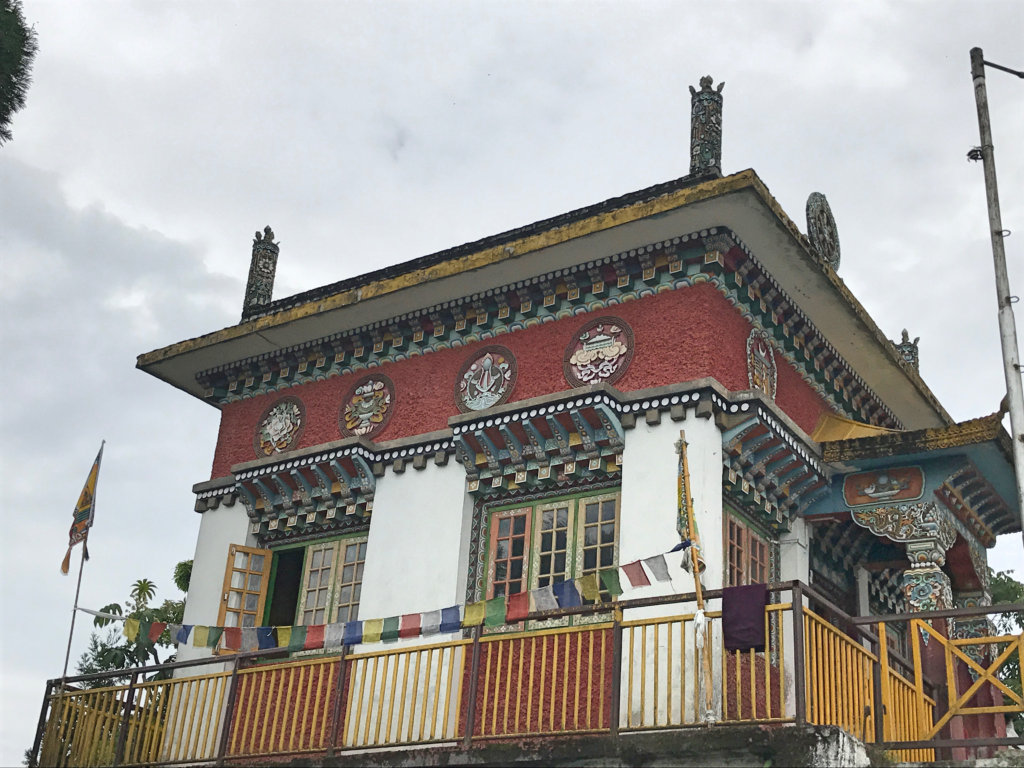
The monastery is said to have been built back in the 16th century, and when we visited this place, we observed that it was divided into three sections. The interiors of the monastery, were adorned with beautiful gold sculptures and vivid paintings. An exquisitely carved statue welcomed us to the monastery. A huge assembly hall was located amidst the monastery on one of the floors, it was supposedly the prayer room. On the topmost floor of the monastery was a glass house, enshrining a master piece. This was a seven layered wooden structure, which is said to depict the stages of enlightenment- life after death. It is said to have been built by an architect, who just had one arm and it is said to have taken him nearly 5 years to complete carving this splendid structure. Also we wandered through a small adjoining room, having its corridors housing the clothes, vessels and weapons used by kings of those times.
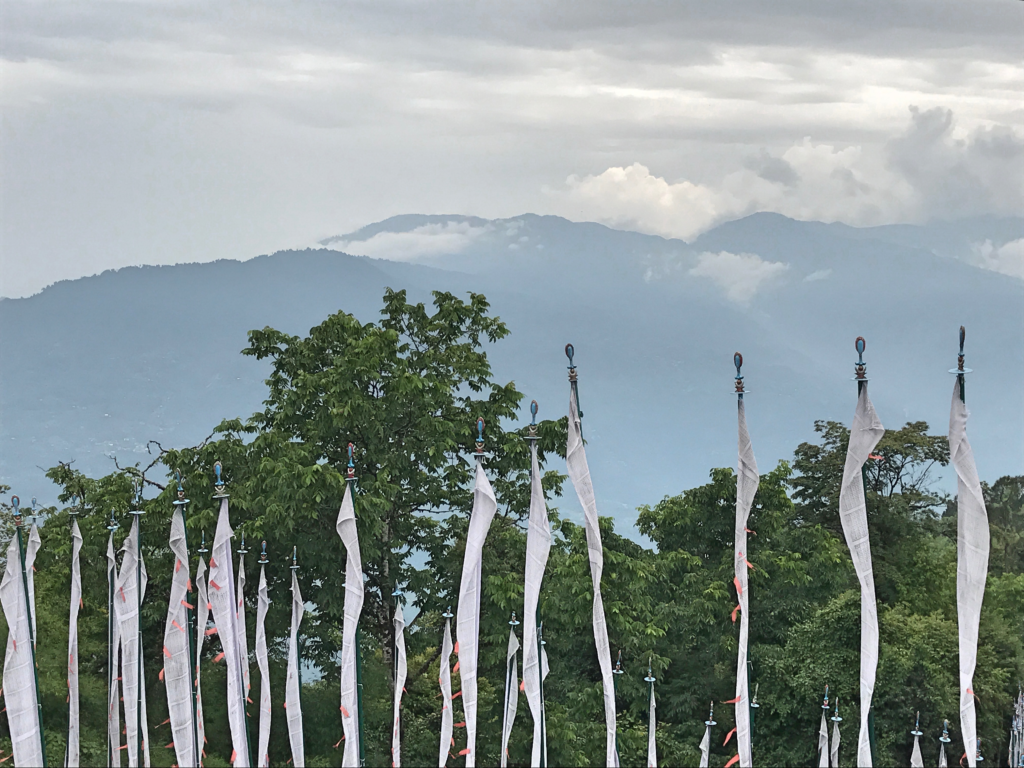
All around Sikkim, we kept noticing colorful flags fluttering up high in the air, at a few locations and a series of white flags at the others. It piqued my curiosity and I ended up asking the locals, who gave me a clear picture of the symbolism of both. The white flags are said to symbolize the liberation from the cycle of life and death. When a person passes away, after 43 days they plant 108 flags for the emancipation of the soul of the person.
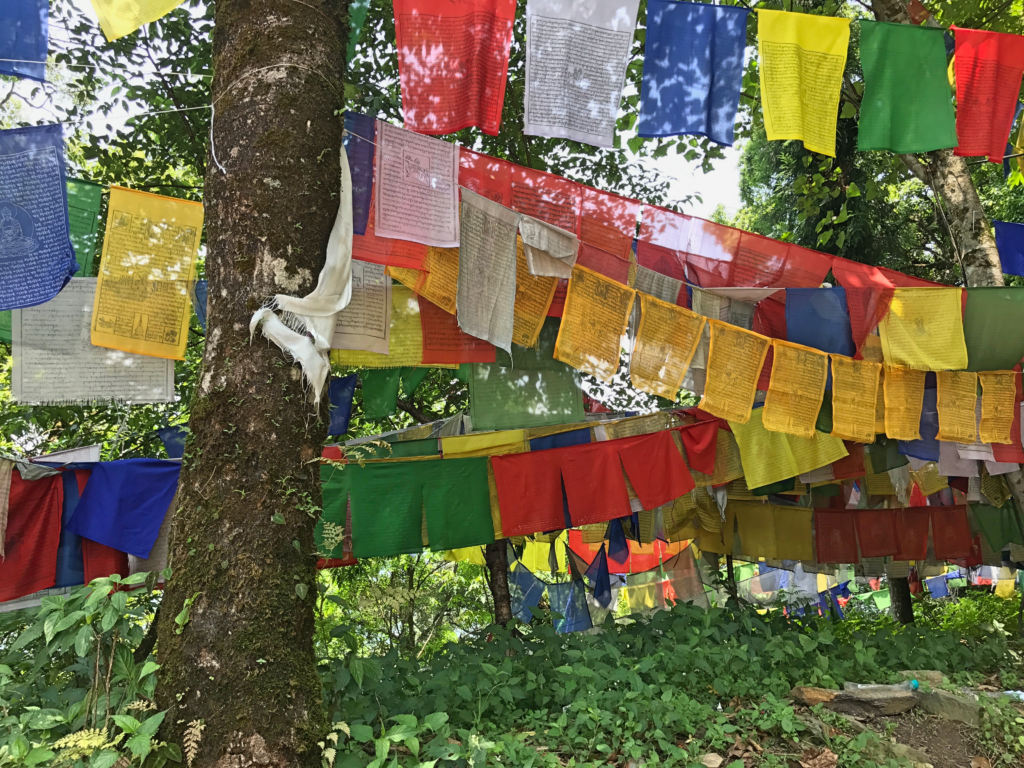
However, the colorful flags symbolize the 5 elements of the earth. The topmost blue stands for the sky and space, white symbolizes the air and the wind, red symbolizes fire, green symbolizes water, and yellow symbolizes the earth.
Due to a Riot that happened in Darjeeling, right the day before we were supposed to drive there, our plans for the next two days had to be cancelled. We made a difficult, last minute, rushed decision of staying back at Pelling. Believing that whatever happens for good, we decided to cover the two other best places – Char Dham and the Buddha Park, that we had missed seeing earlier.
Guess What? We felt it was the best decision that we took! Overlooking the if’s and buts of course!
Char Dham – A devotee’s recluse
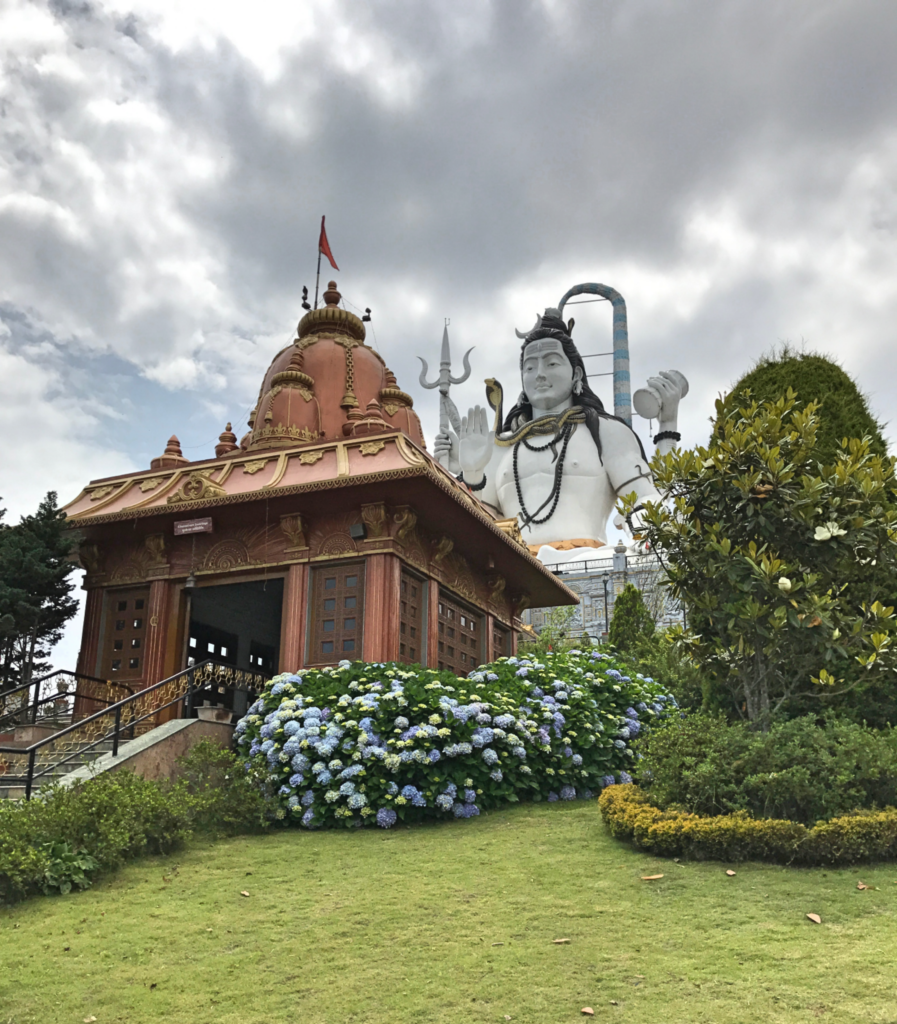
Char Dham is located about 5 km from the Namchi town and it is accessible by a roadway. As we entered, the first thing that we noticed was a seated towering statue of Lord Shiva. No matter where we walked around the whole premises, it never went out of our sight. Within the temple, under the Shiva statuette, its interiors were decorated with several wall murals depicting the story of Lord Shiva and the related mythological stories were narrated. We noticed that the replicas of the twelve Jyotirlangas were constructed around the Shiva figurine. A meditation hall was built in one far end of the place, where people are allowed to meditate during the early hours.
Buddha Park – An enthralling structure
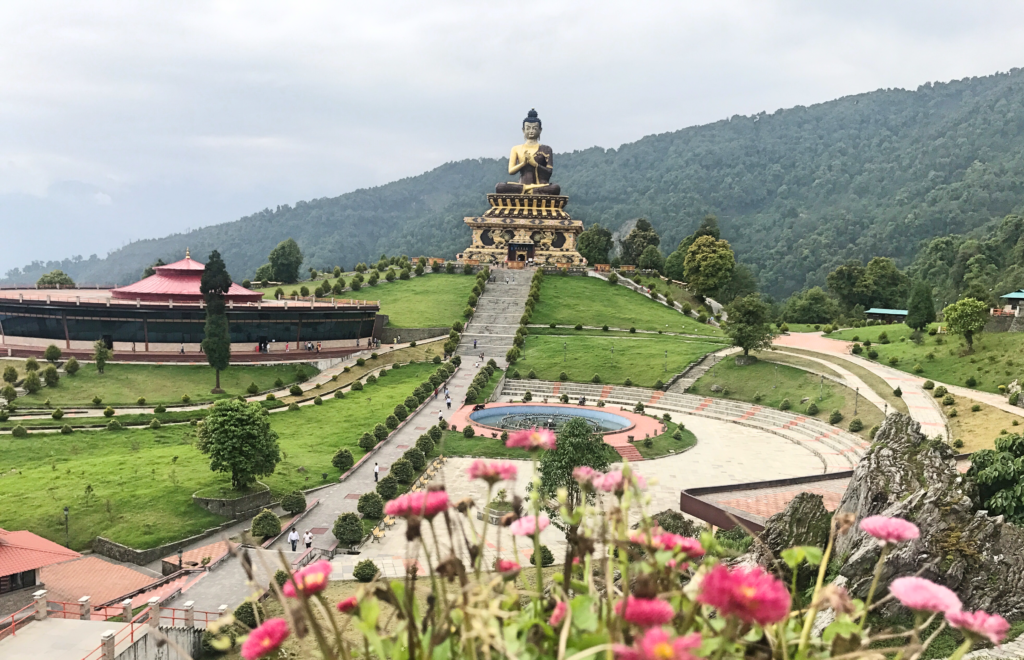
The Buddha Park, located at a distance of 1 km from the Ravangla town, had a massive, stunningly designed, mesmerizing golden effigy of Buddha.
We noticed a huge Museum placed right below the statue of Buddha, along side large wishing bowls filled with water, that surrounded the museum. A spirally constructed gallery demonstrating the life of Gautam Buddha in different styles, was seen on the inside.
Beside the Museum, we could see a large prayer hall, from where the chants of the monks echoed, throughout the park. When we approached the Buddha statue from the front we had to climb a steep flight of stairs, but the whole effort felt worthwhile once we got to the top.
The whole park was beautifully landscaped and it is a great place to take a peaceful stroll amongst the blooms and the fountains.
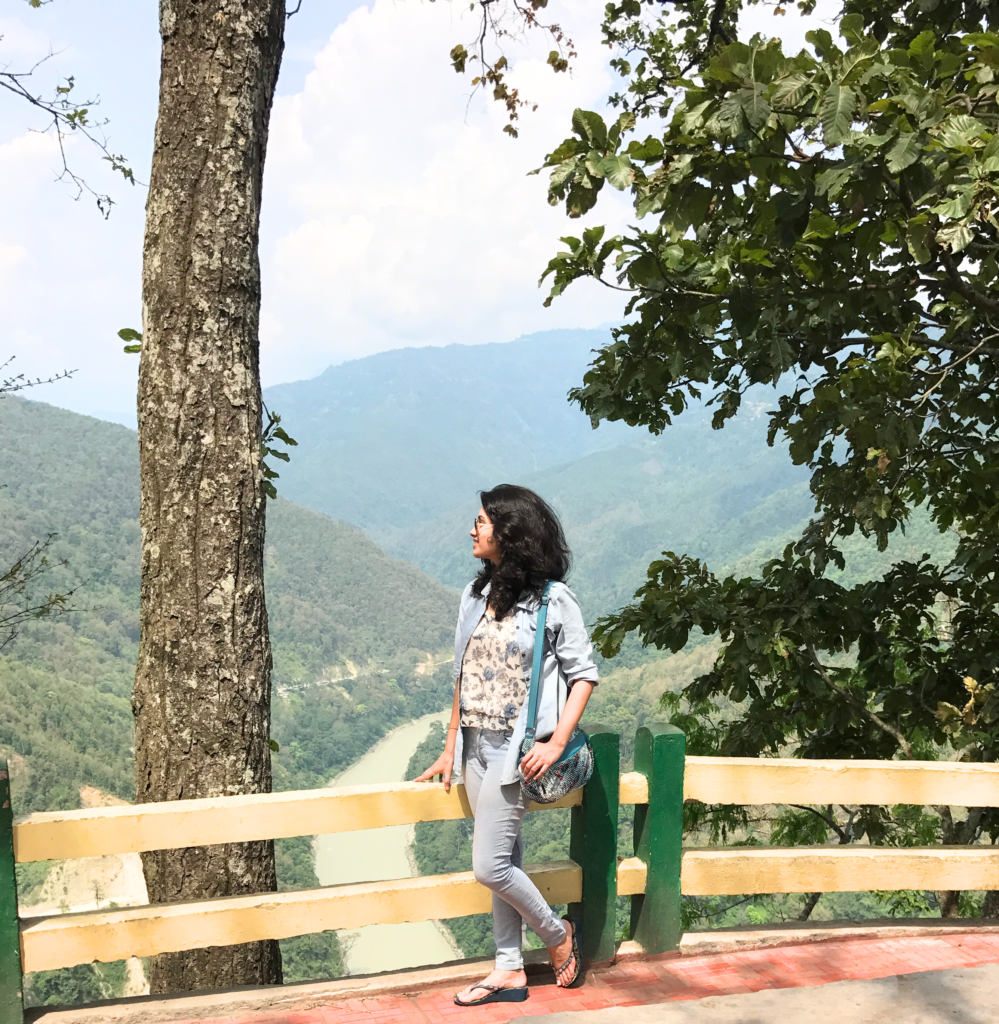
“The purpose of life is to live it, to taste experience to the utmost, to reach out eagerly and without fear for newer and richer experiences.” – Eleanor Roosevelt
Takeaways:
- Directorate of Handicrafts & Hand-looms, located in Gangtok is also a place where many tourists visit. It has an entry fee of Rs 10. This place has a small sales area where people can buy handmade articles specific to Sikkim and a museum which was let out for display. Also people can watch the artisans at work, here.
- The Kanchenjunga falls has an option of Zip lining and rock climbing which comes at a small cost.
- The Entrance fee per person for the CharDham is around Rs 50. Chardham has a Cafeteria inside its premises and there are a few hotels on the outside, as well. Shoes can be worn while going to the cafeteria which otherwise needs to be given to be kept. You get vegetarian snacks, tea, coffee, crisps, soft drinks etc.
- Buddha Park is open between 9 am-5 pm and an entry fees of Rs 50 is collected from each person. Since there are over 100 stairs to reach the idol of Buddha and its interiors, one can take a ride on the Electric buggy ,which would take people till there.
Read the first part here : Exploring the Mountains of the North East – Part 1
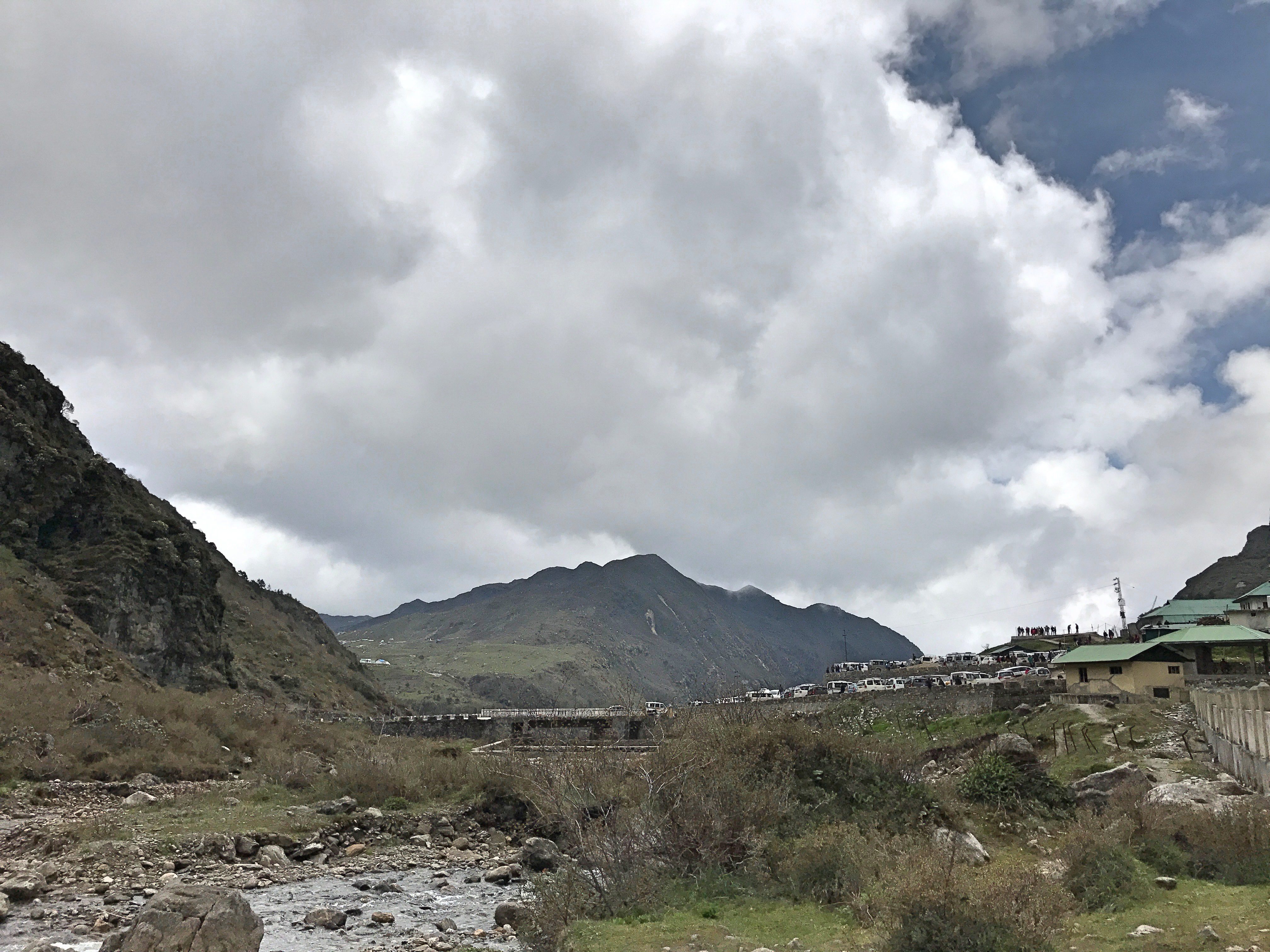
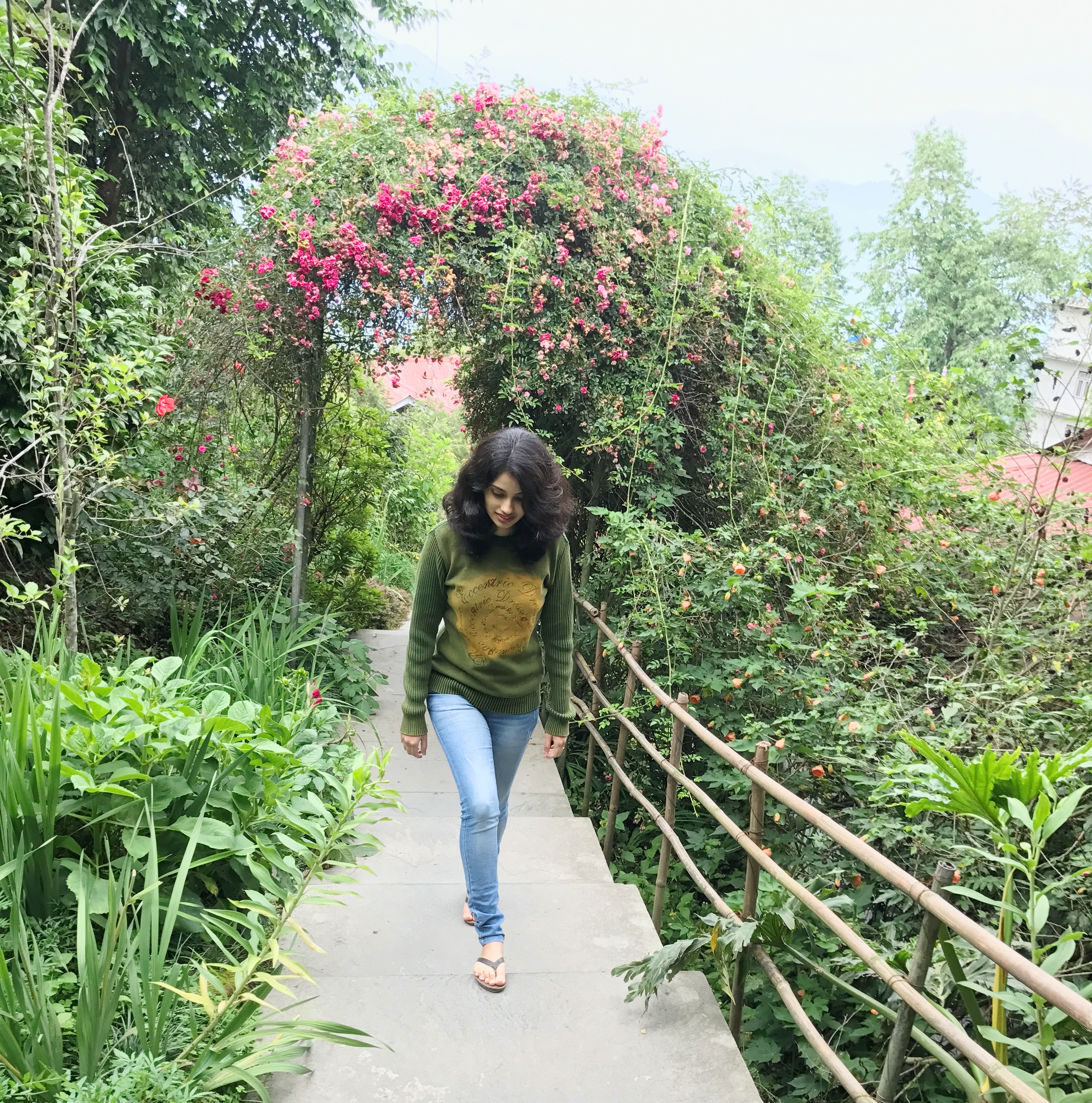
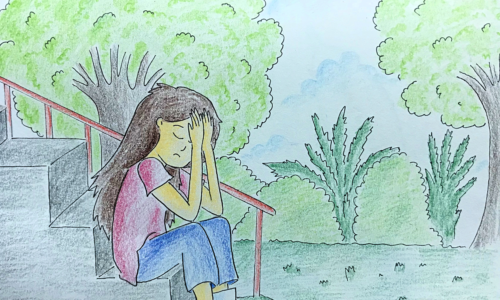
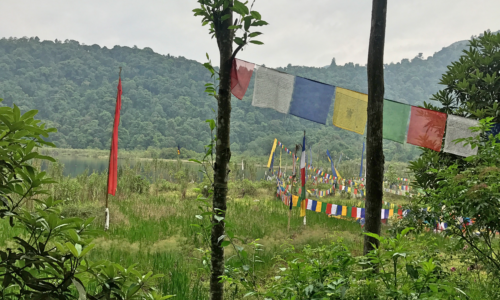
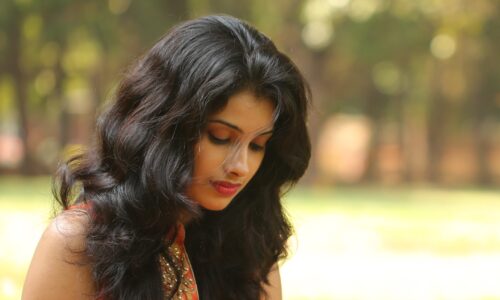
5 Comments
Jagatheespandi
Nice!!Keep traveling and share you travel photos & experience to us!!Thanks Nikitasha!!Be happy & Stay Heallthy!!
Anonymous
Beautiful pictures and writing niki ! Keep going, you are doing a great job!
Nikitasha Giriyan
Thank you so much! Still getting a hang of taking better shots. Maybe one day I’d be able to do justice to the beauty in the nature that surrounds us by clicking beautiful pictures. 🙂
Anonymous
Your words bring life to the imagination !! 🙂 Beautifully portrayed.
Each line made me drift along with it !!
Nikitasha Giriyan
Thank you! This comment made my day!! 🙂
Hope my words and my future Travel logs keep your mind equally captivated.